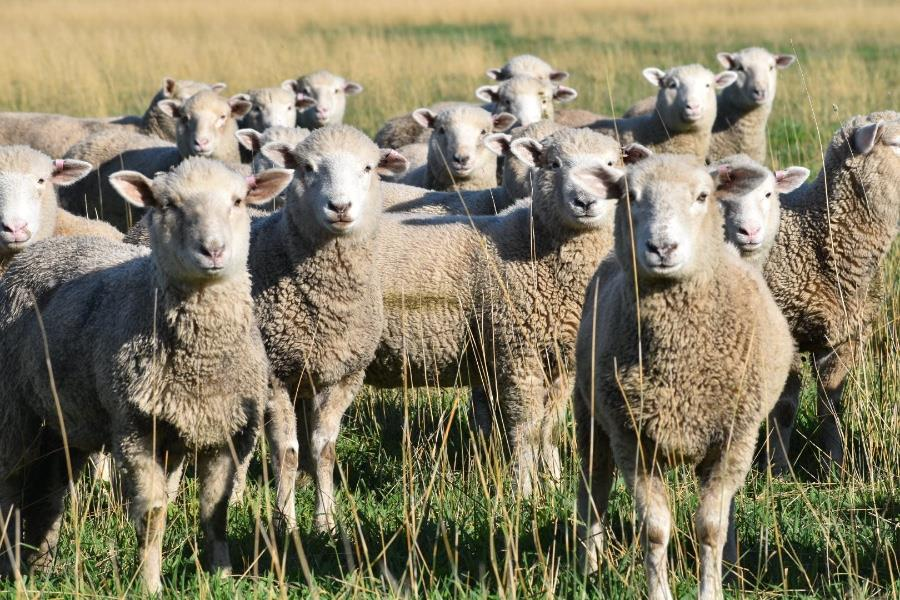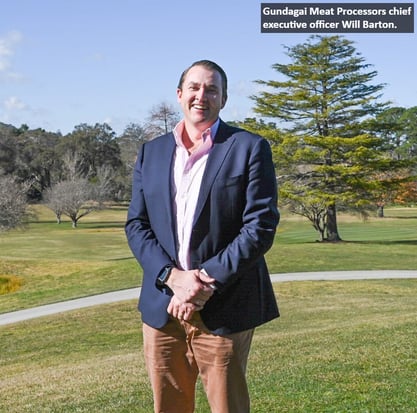 The strong global demand for high quality sheepmeat and a sheep flock that has reached its highest level since 2007 has analysts pointing to the huge opportunities for Australian producers, but challenges abound too.
The strong global demand for high quality sheepmeat and a sheep flock that has reached its highest level since 2007 has analysts pointing to the huge opportunities for Australian producers, but challenges abound too.
Beyond the obvious hurdle of being able to process this increased turnoff at the optimum time, Gundagai Meat Processors chief executive officer Will Barton has pointed out that we need to "make sure we can sell it".
Doing so, he said, requires a greater industry focus on both eating quality and growing the number of consumers.
"If you park the political instability and issues, [the US is] a deep market, they're a big market, and they have the ability to pay," Mr Barton said.
"Somewhere between one and 2% of Americans eat lamb, and one of the reasons we're really passionate about eating quality is if 2-2.5% of Americans start to eat lamb, Australia and New Zealand combined would run out."
Likening it to Australians trying crocodile meat and not making it a regular part of their diet, Mr Barton said there was only a small window of opportunity to get a global consumer on the lamb bandwagon.
"If only one or 2% of the [US] population is trying lamb once and they don't have a good eating quality experience, they say ‘I tried lamb once and didn't like it’," he said.
"The challenge we have in the US is making sure every single one is a winner, and if we're not looking at marbling and measurements of that nature and we're selling it at less than perfect, that market will start to say no."
GMP is meeting this challenge through its use of innovative technologies, like DEXA to assess lean meat yield and the MEQ Probe to objectively gauge the level of intramuscular fat in hot carcases.
In doing so, and through the use of a proprietary grading system, the GLQ Score, the company is able to offer a lamb grid that pays a premium for lambs with above average marbling, discourages over-fattening, and promotes best practice animal health and management.
It's a move that has put them five years in front of everybody else, Mr Barton said.

"Being five years in front of everyone else doesn't necessarily equal profit, so it means that you're doing something with a belief of a future profit.
"We believe this is the future and, essentially, there's a few things that we need to work through to get the whole industry to where we ask them to be able to elevate lamb generally to a different category like we’ve done with beef."
Sustainability story
Part of this is exploring the links between soil health, plant health, animal health and human health, and being able to track what's happening, which all plays into the sustainability rhetoric.
"What has become a stark reality for me after my recent trip to the US is that the exact direction and speed of change really depends on a consumers' willingness to pay," Mr Burton said.
"There are other settings - government regulations, social license to operate - but ultimately, the consumer's preference and their willingness to pay is what drives changes.
"The people that aren't making the changes in some supply chains - i.e. everyone that’s not us - has a perception that it's either not required, or it's too hard, or they're not going to get paid enough for it.
"We obviously believe it's not too hard because we're doing it; it is worth it and it needs to be done."
Read more:
-
Getting lamb on the table amid a host of hurdles for premium products
- United Arab Emirates posts huge increase in trade volumes of lamb and mutton
Mr Barton believes the lack of changes in the supply chain is because the sustainability drivers are not yet the top priority.
"What I see when I go to the States is that the people I’m engaging with are not Gen Z - these are people that are 13 to 28 years old and they're not decision makers yet, they’re not the CEOs of abattoirs, they're not in Congress in the US, they're not in any kind of position of power," he said.
"Most of the people I engage with to sell meat to are Baby Boomers, Gen X, and Gen Y, and the concepts of sustainability and other inherent things that we're working on here... it's not native to them.
"At a consumer level, they're attuned to it and they want to talk about it on social media, but at the business level and at the organisational level, there's not really a willingness to pay for it or change the system if it impacts profitability."
That means businesses and organisations love sustainability as long as they don’t have to pay for it, Mr Barton said.
"I believe this is fundamentally why we're not seeing more rapid change in uptake in the various elements of sustainability; the decision makers, particularly in countries like the US, just aren’t paying attention to it yet because it might hurt their profitability."
Come 2030, that'll be significantly different though, as the majority of the population tips over to Gen Y and Gen Z.
"Gen Z is really the generation that will push this change through, and soon we'll start to see this change gather momentum."
 Results
Results-3.png)
